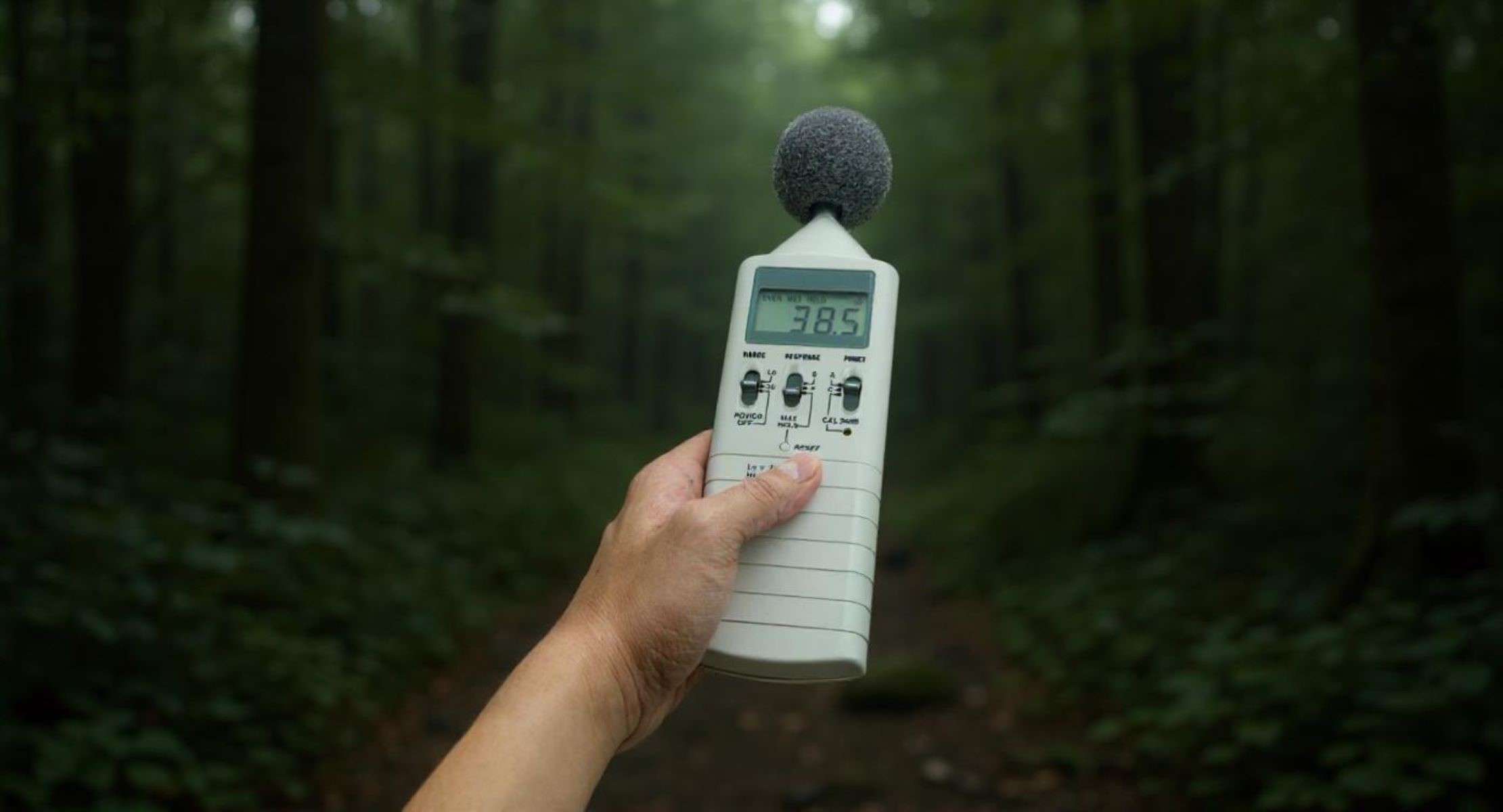How Much Sound Do You Really Need in a Dense Forest?
Ever wondered how much sound you actually need when you’re deep in a dense forest? It might seem like an odd question, but sound plays a surprisingly critical role in forest ecosystems, human experience, and even survival. In this article, we’re going to explore the fascinating world of forest acoustics, peeling back layers of natural silence, animal chatter, and human noises. So, buckle up as we dive into the symphony (or sometimes the eerie silence) of dense forests.
Understanding Sound in Dense Forests
When we talk about a dense forest, it’s important to picture more than just a lot of trees. A dense forest is a complex environment where thick trunks stand close together, creating a nearly impenetrable wall of vegetation. The ground beneath is often covered with layers of shrubs, moss, fallen leaves, and tangled vines, all contributing to a rich, multi-layered habitat. Above, the canopy forms a heavy, leafy roof that blocks much of the sunlight from reaching the forest floor. This compactness not only limits visibility but also has a profound effect on how sound moves through the space, shaping the acoustic experience for both animals and humans alike.
Sound behaves very differently in these environments compared to open spaces. Rather than traveling freely and clearly, sound waves in a dense forest face numerous obstacles that alter their path and intensity. Leaves and branches absorb much of the sound energy, softening and muffling noises that might otherwise travel far. This natural sound absorption means that even loud sounds tend to fade quickly, making the forest feel quieter and more intimate than it actually is. Additionally, the uneven ground, scattered with rocks, fallen logs, and leaf litter, creates a complex surface that scatters sound waves in many directions, further complicating how noises propagate.
Humidity and air temperature inside dense forests also play a crucial role in sound propagation. High humidity, which is common in these environments, can change how sound waves travel depending on their frequency. Some frequencies might travel farther or sound clearer, while others get dampened or distorted. It’s a bit like how a whispered secret might carry differently in a damp, thickly carpeted room compared to a dry, empty hall. This interplay of moisture, temperature, and vegetation creates a unique acoustic environment that varies from one forest to another, making each soundscape distinct.
In essence, the dense structure of the forest transforms sound into a rich, layered experience where noises are not simply transmitted but filtered, scattered, and softened. Instead of sharp, clear echoes like in open spaces, sounds here weave through the foliage like a gentle conversation, sometimes barely audible and other times startlingly close. This delicate balance shapes the behavior of forest creatures, their communication methods, and even how humans perceive and connect with the natural world when they step beneath the thick canopy.
Why Does Sound Matter in a Dense Forest?
- Animals depend heavily on sound for communication in dense forests. This includes warning calls that alert others to danger, mating songs that help attract partners, and territorial signals to keep rivals at bay. These vocalizations are essential for maintaining social structures and ensuring survival within the thick woodland environment.
- Sound plays a vital role in animal navigation. Creatures like bats use echolocation, sending out sound pulses and interpreting the echoes to understand their surroundings. Other animals rely on following familiar sound trails, such as the running water of a stream or the rustling of leaves caused by fellow species, to find food, shelter, or mates.
- Detecting predators or prey through sound is crucial for survival. Many forest animals have evolved sensitive hearing to pick up subtle noises like footsteps, snapping twigs, or faint rustles. This acute awareness helps prey avoid becoming a meal and predators to hunt efficiently.
- In dense forests, sound must strike a delicate balance. It needs to be loud enough for animals to communicate effectively with each other across the thick vegetation but also subtle enough to avoid revealing their presence to predators or rivals. This balance influences animal behavior and ecosystem dynamics.
- For humans, sound in a dense forest is more than just background noise; it shapes the entire experience of being in nature. The sounds of flowing water, bird songs, or distant animal calls help visitors orient themselves, indicating the presence of streams, wildlife, or other people nearby, which can be essential in unfamiliar or rugged terrain.
- Sound also provides important safety cues. Sudden noises like cracking branches, rustling underbrush, or animal calls can warn humans of approaching dangers such as falling limbs, wildlife, or changes in weather. Being attuned to these sounds can prevent accidents or confrontations.
- Beyond practical functions, natural forest sounds have a profound psychological effect on people. The gentle hum of insects, the rustling of leaves, and melodic bird calls contribute to reducing stress, improving mood, and fostering a sense of calm and connection to the environment. This acoustic immersion supports mental well-being.
- However, there is a fine line in how much sound is beneficial. Too much noise, especially from human sources like machinery or loud voices, can overwhelm the natural soundscape, causing stress to both wildlife and visitors. Conversely, too little sound can lead to feelings of isolation or unease, as the lack of familiar cues makes the forest feel alien or threatening.
- Ultimately, sound in dense forests is a vital thread weaving together survival, communication, navigation, safety, and emotional experience for both animals and humans. It acts as an invisible yet powerful force that defines how life thrives beneath the canopy.
Measuring Sound Levels in Dense Forests
| Sound Source | Decibel Level (dB) | Typical Frequency Range | Effect on Forest Environment | Human Perception & Impact |
| Whisper | 20 – 30 dB | 250 Hz – 1 kHz | Very soft, often masked by ambient forest noise. | Perceived as quiet, intimate; easy to miss. |
| Rustling Leaves | 20 – 40 dB | 100 Hz – 10 kHz | Creates a natural ambient background sound. | Calming and familiar, contributes to sense of place. |
| Birdsong | 40 – 60 dB | 1 kHz – 8 kHz | Vital for animal communication and ecosystem health. | Pleasant and engaging; signals wildlife presence. |
| Normal Conversation | 60 – 70 dB | 300 Hz – 3 kHz | Can be disruptive if loud; generally rare in deep forest. | Noticeable human presence; may disturb wildlife. |
| Distant Thunder | 70 – 90 dB | 20 Hz – 120 Hz | Natural sudden loud noise, temporarily raises alertness. | Dramatic, often startling but natural. |
The Impact of Too Much or Too Little Sound
Imagine stepping into a forest where all the natural sounds have vanished—no birds singing, no wind whispering through leaves, no rustling of animals in the underbrush. This eerie silence feels unnatural and can create a profound sense of isolation and anxiety for humans. Our brains are wired to expect some background noise in nature; when that’s missing, it can make the environment feel empty and unsettling. For animals too, the absence of ambient sounds is problematic. Many species rely on constant background noise to detect predators or other threats, and without it, their survival instincts can be thrown off balance. Such silence may also signal environmental distress, like a decline in wildlife populations or ecosystem health.
On the flip side, forests can suffer from too much sound, especially when artificial noises invade these natural spaces. Loud human-generated sounds like chainsaws, vehicles, or boisterous voices can overwhelm the gentle acoustic fabric of the forest. This noise pollution stresses wildlife, often driving animals away from their natural habitats or causing changes in their behavior, such as altered feeding or mating patterns. Moreover, excessive noise disrupts the essential communication animals depend on—calls that warn of danger or attract mates may go unheard amid the clamor. For visitors seeking peace, such disturbances spoil the tranquil experience, replacing nature’s harmony with jarring interruptions.
The challenge lies in finding the right balance between too much and too little sound. Natural forests thrive on a soundscape that is dynamic yet subtle—filled with the right amount of bird calls, insect hums, and rustling leaves to keep the environment vibrant but not chaotic. This balanced acoustic environment supports both the ecological needs of animals and the psychological well-being of humans. It allows wildlife to communicate effectively and coexist while offering visitors a calming, immersive experience.
Ultimately, managing forest soundscapes means protecting them from silence that signals decline as much as from intrusive noise that harms wildlife and diminishes the natural ambiance. Maintaining this delicate acoustic equilibrium ensures dense forests remain alive with sound that nurtures life and connects us all to the rhythms of nature.
How Much Sound Do You Really Need?
- Dense forests thrive best with a balanced sound environment, where the natural ambient noise is enough to make the forest feel alive and connected, rather than empty or lifeless. This includes gentle sounds like bird calls, insect buzzing, and wind rustling through leaves that create a rich acoustic backdrop.
- The sound level should never be so loud or overwhelming that it causes stress, confusion, or disrupts the natural behavior of animals. Excessive noise can interfere with animal communication and make both wildlife and human visitors uncomfortable.
- It is equally important to have moments of quiet in the forest—pauses in the soundscape that allow for rest, reflection, and calm. These quieter periods give animals and people alike a chance to recharge, ensuring the sound environment doesn’t become fatiguing or intrusive.
- This delicate balance of sound supports the overall health of forest ecosystems by fostering better animal communication, breeding success, and predator-prey interactions. It also enhances the human experience, helping visitors feel more connected to nature and improving their mental well-being.
- Scientific research confirms that moderate levels of birdsong and natural sounds positively influence animal diversity and ecosystem vitality. Rich acoustic environments encourage more species to thrive by facilitating effective communication and reducing stress.
- Visitors to forests consistently report higher satisfaction and a greater sense of enjoyment in areas where natural sounds are preserved, as opposed to places that are either unnaturally silent or dominated by disruptive noises.
- Many ecological restoration projects now incorporate soundscape management strategies designed to restore or maintain natural forest acoustics. These efforts aim to recreate balanced sound environments that benefit both wildlife and humans, emphasizing the importance of sound in ecosystem recovery.
- Ultimately, the ideal amount of sound in a dense forest is neither too much nor too little but “just right” — creating a harmonious soundscape that nurtures life, encourages biodiversity, and deepens human connection to the natural world.
Soundscapes: The Acoustic Identity of Forests
| Soundscape Component | Description | Typical Sources | Ecological Importance | Impact on Human Experience |
| Biophony | Sounds produced by living organisms | Birdsong, insect calls, animal movements | Vital for animal communication, mating, and territory | Creates a sense of vitality and connection to nature |
| Geophony | Natural non-biological sounds | Wind blowing, rain falling, flowing streams | Indicates environmental health and natural processes | Provides calming background noise; enhances immersion |
| Anthrophony | Human-made sounds | Vehicle engines, human voices, machinery | Often disrupts animal behavior and natural cycles | Can reduce tranquility; may cause stress or discomfort |
| Management Strategies | Efforts to maintain or restore healthy soundscapes | Noise reduction, habitat restoration | Helps preserve natural communication and biodiversity | Enhances visitor experience by maintaining natural ambiance |
| Goals and Outcomes | Desired characteristics of a forest soundscape | Rich, dynamic, balanced sound environment | Supports ecosystem health and species diversity | Provides peaceful, engaging, and authentic nature experience |
Practical Tips for Enjoying Forest Sound Naturally
If you want to truly immerse yourself in the natural sounds of a dense forest, timing is everything. Early mornings and late evenings tend to be the quietest parts of the day, with fewer human disturbances and more active wildlife. Visiting during these times allows you to catch the delicate chorus of birdsong, the subtle rustling of leaves, and the gentle buzz of insects at their peak. These quieter hours offer the best opportunity to connect deeply with the forest’s acoustic environment without distractions.
Moving slowly and mindfully is another key to tuning into the forest’s sounds. Sudden movements or loud talking can startle animals and drown out the gentle natural noises you’re trying to hear. By walking softly and keeping your voice low, you allow the forest’s soundscape to unfold naturally around you. Closing your eyes can help focus your hearing, sharpening your awareness of the many layers of sound—from the whisper of the wind through the canopy to distant bird calls and the tiny movements of insects hidden in the undergrowth.
To enhance your listening experience, you might consider bringing along some simple gear. A portable sound recorder can capture the forest’s acoustic richness for later enjoyment or study, allowing you to replay the subtle layers you might miss in the moment. Noise-canceling headphones can help isolate these recorded sounds, offering a new way to explore and appreciate the forest’s soundscape even when you’re away. Additionally, smartphone apps designed to identify bird songs or insect calls can deepen your understanding and appreciation by telling you exactly what you’re hearing.
Ultimately, enjoying the sounds of a dense forest is about slowing down and opening your senses. It’s a chance to step away from the noisy pace of everyday life and reconnect with nature’s rhythm. By being patient, attentive, and equipped with the right tools, you can discover an entire world of sound that brings the forest to life in a uniquely immersive and peaceful way.







